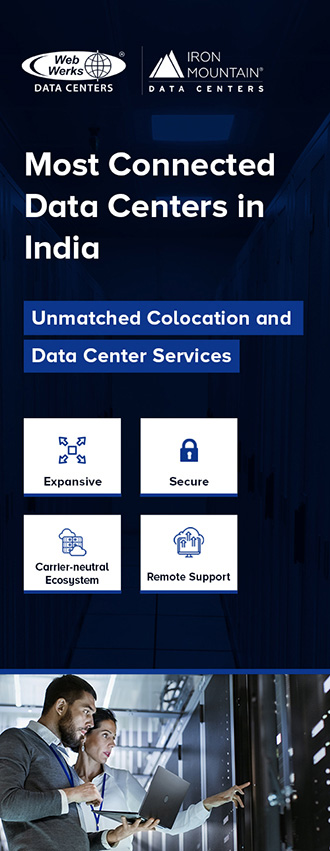Every morning I get up, grab a cup of coffee and then read my LinkedIn feed to see what’s happening in the data center industry. During the past year, I have found an increasing number of articles and posts discussing how individuals and companies are trying to minimize data centers’ impact the environment. Similarly, the European Union’s “Fit for 55” initiative or Singapore’s moratorium on new data center construction show that governments are addressing environmental impacts with regulations. Since all of this is happening in a public forum, it shows that the world has a growing interest in how data centers impact the environment.
Presently, power and the associated modes of how it’s generated are the focal point of the sustainability equation. Specifically, many key discussions are on the current inverse relationship between improvements in the costs of renewable generation and rising power prices.
The decline in the costs associated with renewable power generation methods, such as wind and solar, has made them more competitive than the fossil fuel alternatives. For example, the consulting firm Lazard publishes yearly data on the Levelized Cost of Energy. The Levelized Cost of Energy measures the average net present cost of electricity generation for a plant over its lifetime. In their 2021 analysis, they show “that as the cost of renewable energy continues to decline, certain technologies (e.g., onshore wind and utility-scale solar), continue to maintain competitiveness with the marginal cost of selected existing conventional generation technologies.” Furthermore, “utility-scale solar has been falling by 11 percent per year in the last five years, while an annual decrease in cost has been 5 percent over the same period for onshore wind.”
In contrast to the declining costs in renewable power generation, the cost of power has been moving in the opposite direction. According to the United States Energy Information Administration, electricity prices had increased 1.8 percent per year in the United States for the past 25 years, from a national average cost of 8.38 cents per kilowatt-hour (kWh) in 1994 to 13.01 cents/kWh in 2019. A lowering cost of power generation with an increasing cost of power may seem like a paradox, however, if you consider that generation is only approximately 48 percent of the total cost that the consumer pays, then it makes sense. The other 52 percent of the price covers electrical transmission and distribution, taxes, depreciation and maintenance items.

If the data center industry wants to help accelerate the course to the global move to eco-friendly energy, it will need to move beyond carbon cancellation efforts and become more actively engaged with the renewables industry. Although underwriting a solar, wind or hydroelectric farm is good, it is not going to solve the energy problem. This is demonstrated by the continued increase in power pricing, even though cheaper renewable capacity increased across the globe by almost 280GW in 2020–45 percent more than in 2019. Solutions will require a more significant business investment. Leaders should consider the following four points, and then tailor additional actions based on their findings:
1. Renewables must be built in the most productive locations (i.e., places with plenty of sun or wind and the land to build it on), which means that they are usually built far away from major population centers. The result of this current mode of location is a “hop” effect in which the communities surrounding the wind farm or solar field, for example, are bypassed to support higher demand areas. To fix this, the industry needs to partner with the regional power providers to develop enhanced infrastructures capable of supplying all of the markets within the region.
2. Along with improvements in the transmission network, the industry needs to work with the regional and global power suppliers to figure out storage and management issues, in order to ensure additional renewable power supplies are delivered where required.
3. Hour-to-hour variations in net load are a vital indicator of the need for short-term flexibility, which must be provided by consistent generation. For example, in Ireland in 2020, the highest hourly requirement was almost 31 percent of the daily peak demand, and in Texas, it was 25 percent of the daily peak demand. To fix this the industry needs to increase the capacity and lower the cost of grid-scale energy storage. These actions will not only prevent the regional power companies from having to build additional conventional power to be able to deal with the significant variations in net load, but it also will maximize the delivery of renewable power on-site.
4. Data centers often have large amounts of stranded power due to server utilization and the facility’s design. Even though it is the customers’ job to focus on server utilization, the industry needs to ensure they design efficient power distribution from the substation. Building more efficient data centers also adds the perk of allowing more renewable power to be made for our industry to supplement the local power grids. If the data center industry wants to be a part of the sustainability solution, it needs to rethink its role in developing more renewable power. Of course, energy is only the tip of the iceberg; because the industry’s sustainability agenda also must include the related issues of water usage, carbon footprint, heat waste, a supply chain’s use of rare earth minerals and toxic materials involved in production. As one of the largest consumers of power and water around the globe, the data center industry needs to commit to making a difference that goes beyond offsetting their environmental impact. The world needs it now more than ever.
ABOUT THE AUTHOR
Tony Grayson is General Manager of Compass Quantum and is known throughout the industry as a cloud and datacenter leader. Grayson regularly speaks and writes on topics ranging from sustainability to nuclear to data centers to edge. Before joining Compass, Grayson was an SVP at Oracle, where he was responsible for their physical infrastructure and cloud regions. Prior to this he held senior positions with AWS and Facebook. Before embarking on his data center career, Grayson served for twenty years in the United States Navy in multiple places, including Commanding Officer of USS PROVIDENCE (SSN-719). Grayson is a winner of the prestigious VADM James Bond Stockdale Award for inspirational leadership.



